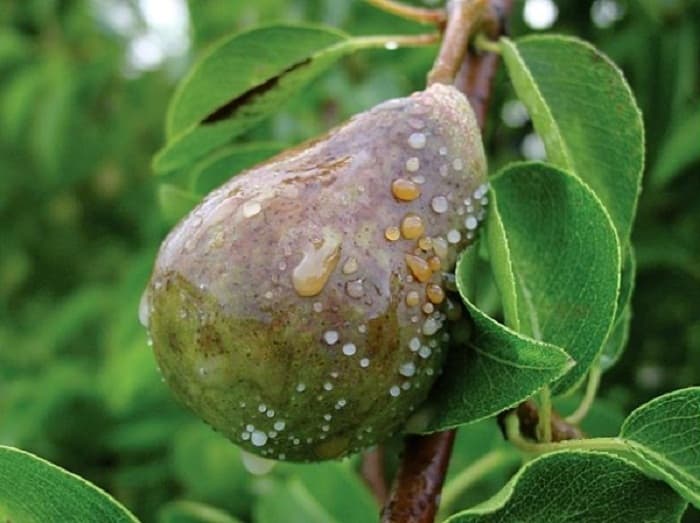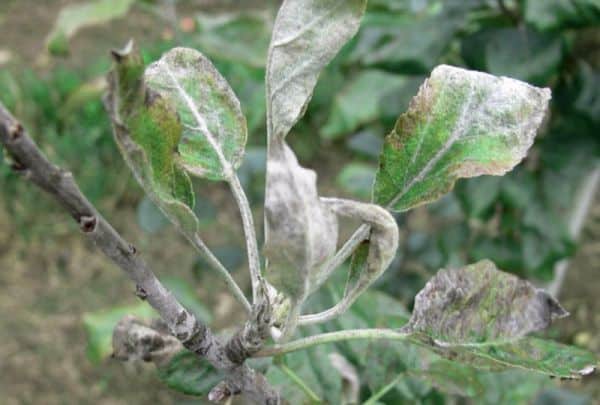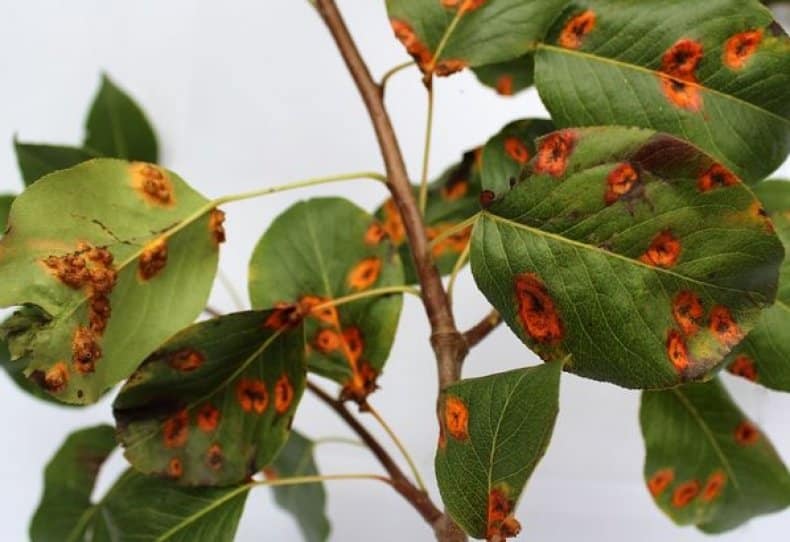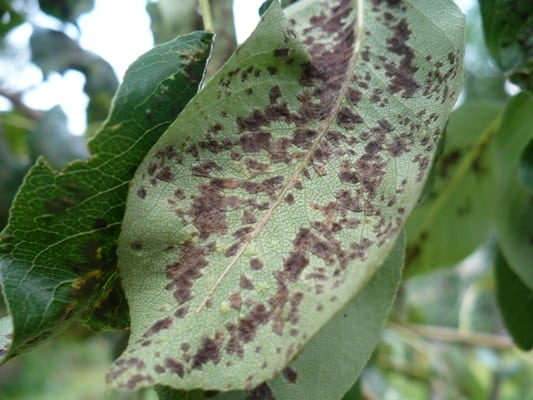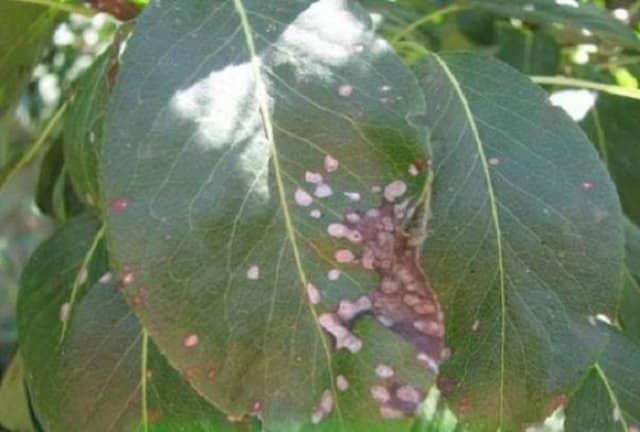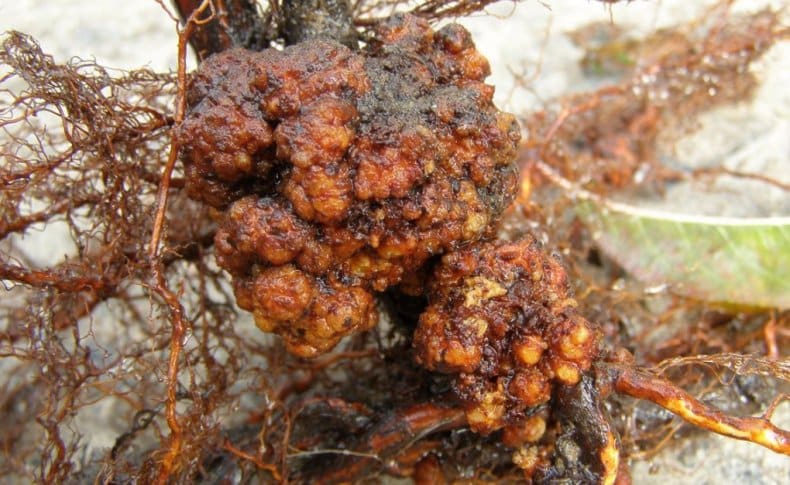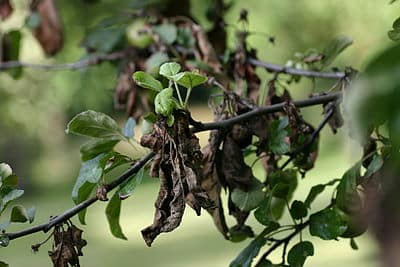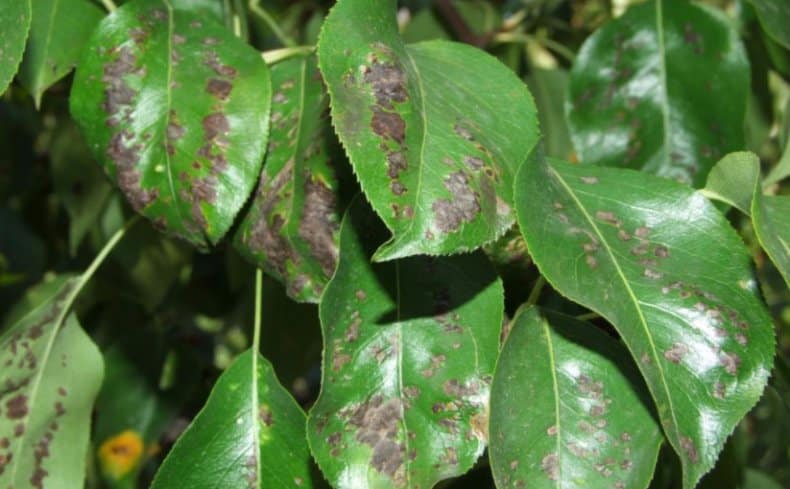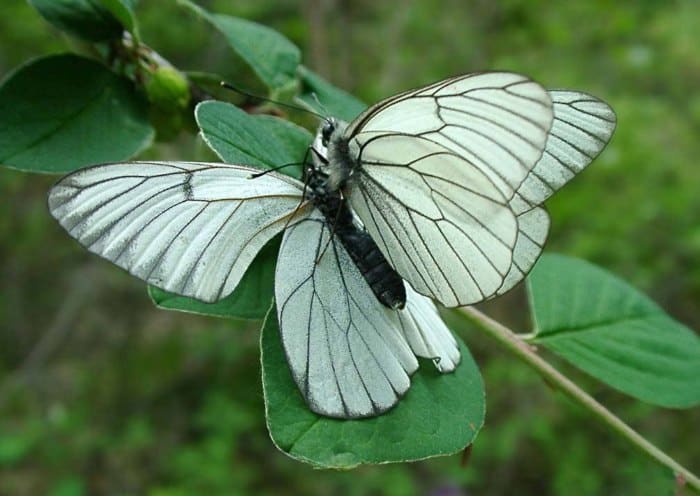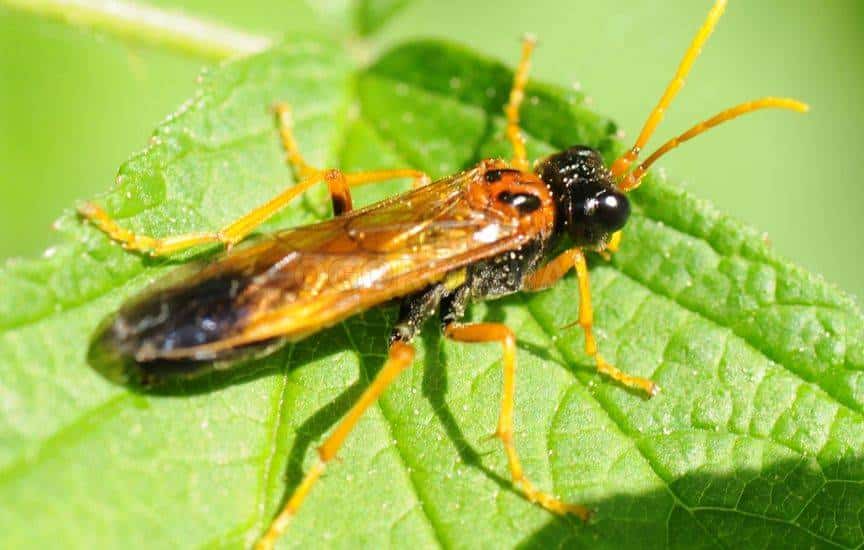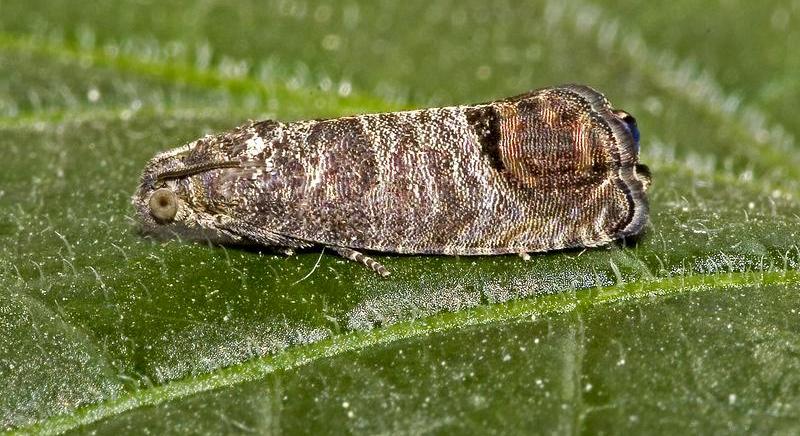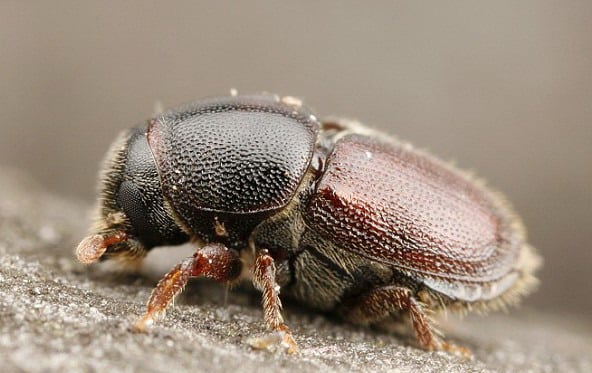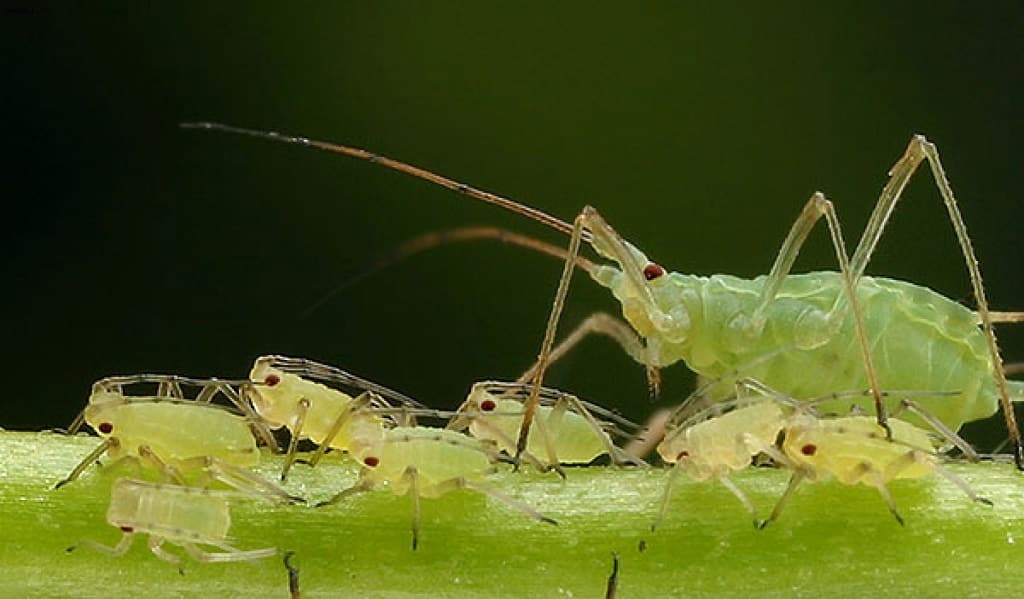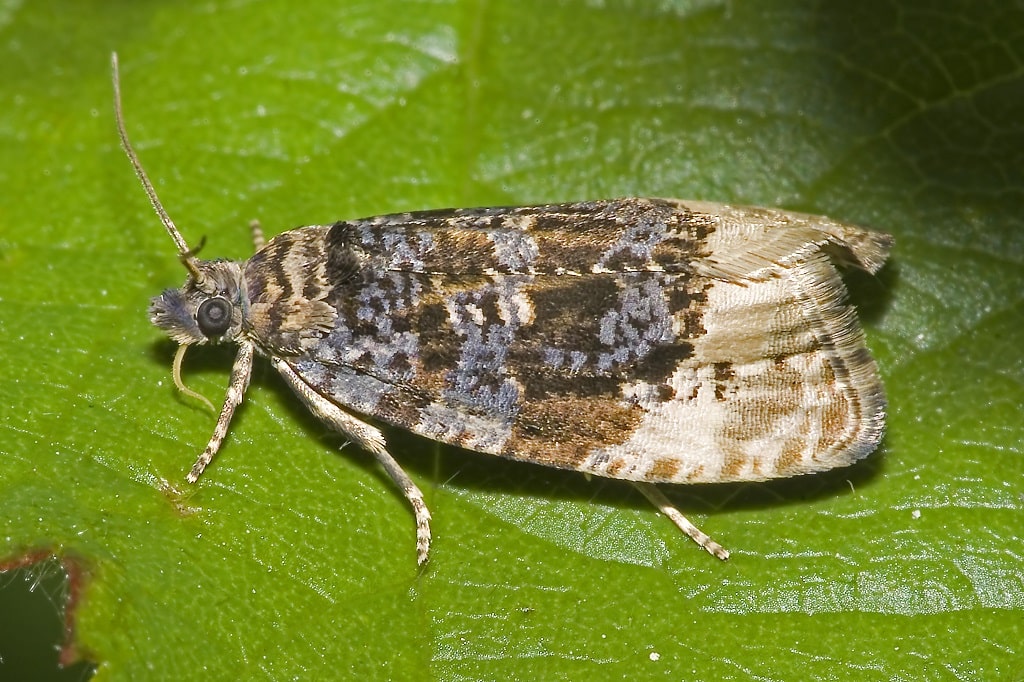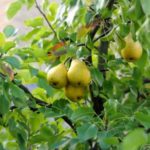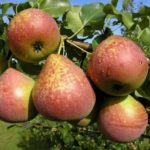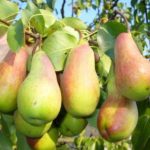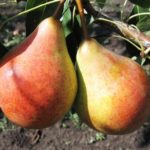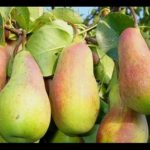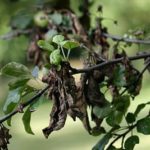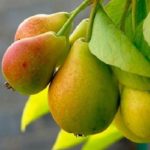To grow fruit trees, you must have the knowledge and skills to care for them. Many of them are damaged by fungal infections and parasitic insects. We must be able to prevent such conditions and protect the tree from them. Fruit yields will be stable, and there will be no problems with the growing season of the crop if you know everything about pear diseases and pests.
- Pear diseases
- Fruit diseases
- Scab
- Fruit rot or moniliosis
- Sooty fungus
- What are the diseases of the leaves?
- Powdery mildew
- Rust
- Brown spot or phyllostictosis
- Mosaic disease
- Septoria
- Stem and root diseases of pear
- Black pear cancer
- Cytosporosis
- Root cancer
- Bacterial burn
- Pear parasites and methods of combating them
- Gall mite
- Hawthorn, butterfly
- Sawfly
- Pear sucker
- Pear moth
- Sapwood
- Gray aphid
- leaf roller
- Prevention and protection of pear trees from diseases and pests
- Fighting diseases and pests with folk remedies
- Is it possible to spray a pear with fruits?
Pear diseases
Most often, diseases of the fruit crop occur due to improper care of the pear tree. It is necessary to carry out weeding of the garden and loosening the soil in a timely manner. After harvesting and pruning, all plant debris is burned.
For the development of pear diseases, certain climatic conditions are also needed. Thus, some fungal infections develop more often in the Moscow region, where there is a lot of humidity in the air.
Fruit diseases
Signs of some diseases appear on the fruits of the pear tree. Then you can be left without a harvest if the pathogenic fungus is not neutralized in time.
Scab
One of the most dangerous pear diseases is associated with the appearance of olive-colored spots on the leaves. And then they move on to the fruits. The description of the infection includes that the flesh of the pears begins to harden and crack. If the fungus acts on the pear at the beginning of fruit set, then its shape becomes distorted.
Prevent the development of pathology by spraying with a 3% solution of Bordeaux mixture in the spring and 1% after flowering. Trimming the crown will help to improve ventilation and illumination. The drugs “Skor” and “Nitrofen” are used in treatment.
Fruit rot or moniliosis
When pears are damaged by the codling moth, spores of the pathogenic fungus are introduced into them. From infected fruits the disease spreads to neighboring ones. Moniliosis can be identified by its brown skin and concentric circles of grayish rot on the surface. If damaged fruits are not removed, then next year you may be left without a harvest.Pears are treated with a solution of Bordeaux mixture before and after flowering. Do not forget to collect and destroy rotten fruits.
Sooty fungus
When pear leaves and fruits turn black, then the plant is affected by sooty fungus. Those crops that are weakened or damaged by aphids suffer from infection. By secreting a sweet and sticky substance, aphids create the ground for the development of sooty fungus. You can suppress the reproduction of spores of a pathogenic organism by spraying with Fitosporin.
Prevention of the spread of infection will be the fight against harmful insects, especially aphids.
What are the diseases of the leaves?
Damage to pear leaves occurs on fruit trees more often than on other parts of plants. And from the leaves the disease spreads further, destroying the fruits, damaging the stems and shoots.
Powdery mildew
Plants affected by marsupial fungus can be easily recognized by the white coating on the young leaves of the pear tree. Over time, brown spots appear instead, which contribute to the leaves drying out and falling off.
Having discovered signs of powdery mildew, you need to collect the dried leaves and burn them, and treat the tree with “Fundazol” three times with a break of 10 days. A solution of soda ash and laundry soap is also effective.
Rust
The pathogenic fungi that cause the disease overwinter on the juniper and then move to the pear. Colonies of parasites can destroy a fruit crop over the summer. A sign of a rust infection is the presence of brown spots on the leaves, which begin to swell in the fall. From them shoots with spores appear. They move with the wind to the juniper to begin their pathogenic activity in the spring.
Having noticed rusty spots on pear foliage in spring, you must urgently remove all diseased leaves and trim the branches. For processing, either a solution of Bordeaux mixture or copper oxychloride is suitable. An infusion of wood ash is also suitable, 500 grams per bucket of water. And the juniper needs to be removed from the garden or transplanted to another place, away from the pear tree.
Brown spot or phyllostictosis
In May-June, the disease manifests itself as light green spots on the leaves. They are round and small in size. Then the color of the spots changes to yellow or brown. At the bottom of the leaf blades of the pear, a grayish or brown coating is visible, which contains spores. The leaves begin to die, which leads to stunted growth of the pear. In the fight against phyllosticosis, it is necessary to use drugs against the fungus. A solution of 1% Bordeaux mixture, as well as copper sulfate, is effective.
Mosaic disease
Leaves with whitish rings on the blade are a sign of a viral disease. The danger of the disease is that it is impossible to cure the plant. It is better to uproot diseased trees to save the garden from destruction. The fight against the virus consists of promptly destroying insect parasites of fruit crops.
Septoria
One of the common pear diseases, septoria blight, is characterized by white spots on the leaf blade. The contour of the spot is outlined by a dark brown border. At their center are fungal spores that reproduce in the warm, humid summer. If the pathology is not dealt with, then by August the leaves will fall off the pear tree, and the tree will enter the winter weakened.
Infection can be prevented by harvesting and burning leaves in the fall, and by digging up the tree trunk. Fungicides are used as preparations, spraying the garden in 3 stages.
Stem and root diseases of pear
There are diseases that affect the stems and shoots of the fruit tree. More often these are viral infections, which are especially dangerous for the life of the culture.They lead to deformation of the trunk, the appearance of growths, bumps, and depressions on the bark.
Black pear cancer
How an Antonov fire burns a tree with disease. The trunk and branches look burnt. The bark bursts, becomes covered with cracks, the edges of which are constantly wet. Pathogenic microorganisms and fungal spores penetrate into them.
Treatment for pear cancer consists of cutting the bark down to healthy tissue. At the same time, the sections are treated with a solution of copper sulfate and covered with garden pitch. In the initial stages of the disease, you can save the pear.
Cytosporosis
The cytospora fungus attacks the bark of garden crops. Most often, it penetrates into the wood tissue in places of burns or frost damage. The bark on the affected area begins to peel off, dry out, and turn red-brown. To combat the disease, they clean the damaged bark, coating the cut areas with clay or varnish. It is necessary to protect pears from damage by whitening the trunks in autumn and spring.
Root cancer
The disease manifests itself on the roots, most often the root collar. Its signs include growths of various sizes and shapes. Small tumors are grey-white and pea-shaped. But as they develop, they increase in size, turn brown, and become lignified.
Seedlings affected by cancer die, although at first they develop quickly. Before planting pear seedlings, you must carefully inspect the root system, removing growths. After pruning, it is necessary to treat the roots with a solution of copper sulfate and then rinse with water. A solution of boric acid, 10 grams per 10 liters of water, is suitable as a disinfectant.
Bacterial burn
Symptoms of fire blight include:
- blackening of the buds, their drying out;
- drying of inflorescences;
- leaf curling;
- darkening of the trunk.
It is difficult to detect the disease immediately.Once a tree turns completely black, it cannot be saved. With a small infection, you can cut off the diseased branches and burn them. The cut area must be treated with copper sulfate.
It is recommended to get rid of bacterial burns with copper-containing preparations such as “Skor”.
Pear parasites and methods of combating them
Fruit crops have many pests trying to live off them. Pears suffer from both large parasites, butterfly larvae, and completely invisible ones that cause great harm to the fruits, leaves, flowers and shoots of the tree.
Gall mite
The length of an adult individual reaches a little less than 2 millimeters, so it is difficult to notice an insect with a white or pinkish body color.
Pests overwinter in the bud scales, where the female lays eggs. From them emerge hordes of hungry ticks that bite into the blossoming leaves. Swellings and galls appear on the leaf blades. When they stick together, they form a solid tumor. After some time, the galls begin to crack, then the mites look for new places to feed. Insects negatively affect the development of trees and fruits, so the fight against them must be timely.
It will be effective to treat the plant with organophosphorus preparations and those containing chlorine. The pear needs to be sprayed twice with an interval of 2 months.
Hawthorn, butterfly
A large butterfly with white wings riddled with black veins can often be seen in the garden. Its larvae are dangerous for pear trees. Gray caterpillars with longitudinal orange stripes are voracious, destroying the ovaries, leaves, and flowers of the plant.
You can fight parasites by destroying their nests, which they prepare from leaves rolled into a tube and wrapped in cobwebs. It is necessary to promptly treat the tree and the ground around with insecticides such as Chlorophos.
Sawfly
Sawflies, which especially spread during wet periods, pose a danger to the crop. The female lays eggs in the receptacle of each bud. Then larvae develop in them, which do not come out, but feed by making passages in the pear fruits. During a development period of 20 days, 1 larva will destroy up to 4 fruits. The life activity of the sawfly leads to the loss of 60% of the harvest.
The number of insects decreases where the root circle is regularly dug up and the soil is loosened. The tree must be sprayed before flowering and after with products containing organophosphorus compounds.
Pear sucker
Of all the species of honeydew, the spotted one causes the most damage to the tree. During the season, 3-4 generations of the parasite develop. You need to start fighting insects in early spring, before the leaves bloom. You can cure a pear by spraying with preparations on a warm, windless, always sunny day. This is when the copperheads are active. The wood is treated with Aktara or Karate. Before and after flowering, it is better to spray the plant with Dimilin. You also need to carry out the procedures in July 2 times with an interval of 10 days.
Pear moth
The butterfly is an insect with dark gray wings decorated with transverse streaking. In July, butterflies stop flying, at which time the caterpillars, having hatched from the eggs, begin to actively feed on pear pulp. Up to 5 larvae can live in one fruit. The fed caterpillars leave the fruits and go to winter in cocoons under the roots of the weeds.
It is necessary to clear the garden of leaves, dig up the ground around the trees, then the frost will destroy the parasite larvae.
Sapwood
The beetle damages the bark of the fruit crop by making horizontal passages inside. The tree begins to leak gum and becomes weak.White larvae gnaw through the transverse passages, which leads to severe damage to the pear and even its death. The fight against sapwood includes:
- pruning and burning diseased branches;
- cleaning the bark from lichens and mosses;
- whitewashing the trunk;
- spraying with Aktara after flowering, repeating the treatment after 2 weeks.
Injections into the cortex of Arrivo and Decis solutions help.
Gray aphid
Invisible to the eye, aphids cause great harm to the garden. Having settled on the leaves of the pear, it leaves its sticky secretions. Because of this, the young seedling is affected by sooty fungus. Although it is difficult to notice aphids, you can identify them by the ants on the pear.
The leaves also begin to curl at the ends and become sticky to the touch. By turning the lower part of the plate, you can see colonies of the parasite.
Treatment against aphids is carried out with chemicals three times. The most effective drugs are Confidor and Fitoverm. Folk remedies used in the summer include spraying with a soap solution, infusion of dandelion flowers and stems.
leaf roller
The insect is 2.5 millimeters in size and has a dark green or yellowish color with a waxy coating. Its fertility is amazing, because the female lays up to 500 eggs per season. Like leaf-eating parasites, pests settle on the green parts of the plant and begin to feed on them. Aphids are identified by leaves rolled into tubes and by a sticky substance running down the bark and branches.
The fight against insects begins in early spring by spraying the plants with Preparation 30. Later, the means “Landing” and “Atom” are used. Baits will help get rid of the leaf roller. Fermented juice or compote is poured into tin cans and hung on trees overnight. In the morning they will be filled with adult insects.You can manually collect the leaves with a tube where the leaf rollers are located and burn them.
Prevention and protection of pear trees from diseases and pests
It is easier to prevent diseases and pest attacks on garden crops than to treat them later. After all, you will have to use chemicals, which will cause some harm to the pear fruit. Prevention measures must be carried out on time:
- The place for planting pears is chosen where the soil is not waterlogged due to the proximity of groundwater.
- They dig up the trunk circle in the fall, after harvesting and in the spring.
- Loosening and weeding are important in disease prevention and pest control.
- Pruning dry, damaged branches will make it possible to increase lighting and the flow of fresh air into the crown.
- Burning of plant residues is mandatory, thereby destroying overwintering pests and pathogenic microorganisms.
- They take care of the bark, sealing cracks, damage from varnish, and whitening.
- Spray the garden with Bordeaux mixture in spring and autumn.
These are the main measures to prevent disease. But it is necessary to apply different treatment for each type of pathology.
Fighting diseases and pests with folk remedies
Chemicals, insecticides, acaricides, pesticides, fungicides are used when it is impossible to cope with advanced pathology. At the initial stages, folk remedies tested by gardeners in practice are suitable. Pears infected with aphids and mites are treated with tobacco infusion. It is prepared from a kilogram of shag waste per 5 liters of water. After 24 hours of infusion, place the container on the fire and boil for an hour. Once the solution has settled, it is filtered and diluted with water. Pour 500 milliliters of infusion into a bucket of water.
For better adhesion to the leaves, add 100 grams of laundry soap shavings.
An infusion of onion peels is prepared as follows: 20 grams of onion peels are infused in 1 liter of water. Spray trees affected by aphids and mites 3 times a month with a break of 10 days. The sawfly is afraid of being fumigated with sulfur. Half of the matchbox is placed in the smoker, blowing smoke onto the pears.
An infusion of baking soda and soap helps with powdery mildew. Treat after the leaves bloom every 7 days. The procedure cannot be carried out during flowering. You can replace the product with an infusion of manure, which is prepared from 1 part mullein and 3-4 parts water. Before treatment, the solution is diluted with water 1:3. Infusions of red pepper, dandelion, chamomile, and celandine are used for spraying against pests.
Is it possible to spray a pear with fruits?
There are certain rules and terms for treating pears from pests and diseases. Usually the procedure is carried out in early spring before the leaves bloom. Then the period before the flowers appear and after they fall will be favorable. Do not use chemicals during pear fruiting. This will negatively affect the harvest. In rare cases, you can use folk remedies, but 2 weeks before harvesting the fruits.


